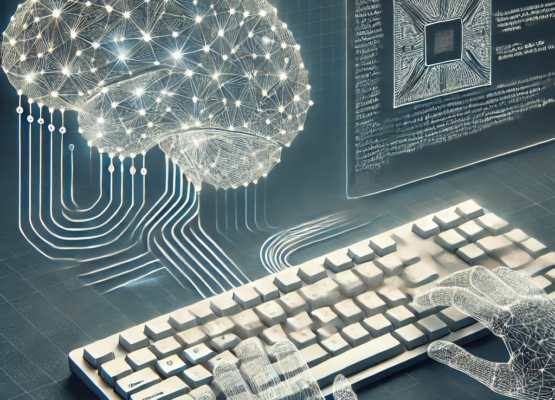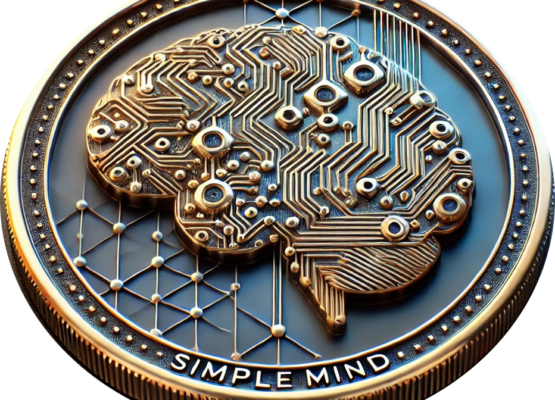Overview
This document provides a comprehensive general explanation of an Augmented General Intelligence (AGI) system framework integrating advanced cognitive architecture, neural networks, natural language processing, multi-modal sensory integration, agent-based architecture with swarm intelligence, retrieval augmented generative engines, continuous learning mechanisms, ethical considerations, and adaptive and scalable frameworks. The system is designed to process input data, generate responses, capture and process visual frames, train neural networks, engage in continuous learning, make ethical decisions, and adapt to various domains. Logging is extensively used throughout the system to ensure traceability and facilitate debugging.
1. Advanced Cognitive Architecture
- Short-Term and Long-Term Memory: The cognitive architecture manages both short-term and long-term memory. Short-term memory temporarily holds input data, and when it exceeds a certain length, it is transferred to long-term memory.
- Goal Management: Goals can be set and managed using a stack structure, allowing the system to keep track of current and previous goals.
2. Enhanced Neural Networks and Machine Learning
- Neural Network Model: The system includes a neural network model implemented using TensorFlow. The model is designed with multiple dense layers to process input data and make predictions.
- Training and Prediction: The model can be trained on provided datasets, and once trained, it can make predictions on new data.
3. Robust Natural Language Processing (NLP)
- Text Generation: An NLP model based on GPT-4 is used for generating text responses. The model takes a prompt, tokenizes it, generates a response, and decodes the response into human-readable text.
- Pre-trained Models: The system leverages pre-trained models from the transformers library to ensure high-quality text generation.
4. Multi-Modal Sensory Integration
- Video Capture: The system includes functionality to capture video frames using OpenCV. This allows the system to process visual data in real-time.
- Resource Management: The video capture resources can be released when they are no longer needed to ensure efficient resource management.
5. Agent-Based Architecture with Swarm Intelligence
- Tools and Agents: The system supports an agent-based architecture where each agent can be equipped with various tools. These tools can be used by the agents to perform specific tasks.
- Swarm Collaboration: Multiple agents can collaborate on tasks, sharing results and working together to achieve common goals.
6. Retrieval Augmented Generative Engine (RAGE)
- Information Retrieval: The RAGE component retrieves information from external sources based on queries. This ensures that the system can access up-to-date information.
- Response Generation: Using the retrieved information and the NLP model, the system generates comprehensive responses to input prompts.
7. Continuous Learning Mechanisms
- Online Learning: The system can perform online learning, updating its models with new data as it becomes available.
- Self-Supervised Learning: The system can generate simulated data for self-supervised learning, continuously improving its performance without external supervision.
- Feedback Loops: Feedback loops allow the system to refine its models based on new data and user feedback.
8. Ethical Considerations and Frameworks
- Guidelines: The system adheres to ethical guidelines, ensuring actions are transparent, accountable, and do no harm.
- Decision Evaluation: Decisions are evaluated against these guidelines to ensure ethical compliance.
9. Adaptive and Scalable Frameworks
- Domain Adaptation: The system can adapt to different domains by loading domain-specific models and data.
- Scalability: The system can scale its resources to handle varying loads, ensuring robust performance under different conditions.
10. Logging and Monitoring
- Extensive Logging: Logging is integrated throughout the system to track the execution of tasks, making it easier to debug and monitor system performance.
- Traceability: Logs provide detailed insights into the system’s operations, enhancing traceability and accountability.
Example Usage
- Processing Input: The system can process textual input, retrieve relevant information, and generate a response.
- Capturing Frames: It can capture and process video frames in real-time, which can be used for tasks such as object detection or scene understanding.
- Training Neural Networks: The system can train neural networks on provided datasets and use the trained models for making predictions.
- Continuous Learning: It can engage in continuous learning by updating its models with new data and feedback.
- Ethical Decision Making: The system ensures that its actions are ethically sound by evaluating decisions against predefined guidelines.
- Domain Adaptation: It can adapt to various domains, such as medical or financial, by loading relevant models and data.
- Resource Management: Efficient management of resources, such as releasing video capture resources when not in use, ensures optimal performance.
This comprehensive AGI system exemplifies the integration of various advanced AI techniques and principles, creating a robust, adaptable, and ethical artificial intelligence capable of performing a wide range of tasks.
Basic point of departure
medaical (c) Professor Codephreak MIT licensed
import tensorflow as tf
from sklearn.model_selection import train_test_split
from transformers import GPT4LMHeadModel, GPT4Tokenizer
import cv2
import numpy as np
import requests
import logging
logging.basicConfig(level=logging.INFO)
# Advanced Cognitive Architecture
class CognitiveArchitecture:
def __init__(self):
self.short_term_memory = []
self.long_term_memory = {}
self.goal_stack = []
def process(self, input_data):
logging.info(f"Processing input data: {input_data}")
self.short_term_memory.append(input_data)
if len(self.short_term_memory) > 10:
self.store_long_term_memory()
def store_long_term_memory(self):
logging.info("Storing short-term memory to long-term memory")
self.long_term_memory[len(self.long_term_memory)] = self.short_term_memory
self.short_term_memory = []
def set_goal(self, goal):
logging.info(f"Setting new goal: {goal}")
self.goal_stack.append(goal)
def get_current_goal(self):
current_goal = self.goal_stack[-1] if self.goal_stack else None
logging.info(f"Current goal: {current_goal}")
return current_goal
# Enhanced Neural Networks and Machine Learning
class NeuralNetworkModel:
def __init__(self):
self.model = tf.keras.models.Sequential([
tf.keras.layers.Dense(128, activation='relu', input_shape=(10,)),
tf.keras.layers.Dense(64, activation='relu'),
tf.keras.layers.Dense(32, activation='relu'),
tf.keras.layers.Dense(10, activation='softmax')
])
self.model.compile(optimizer='adam', loss='sparse_categorical_crossentropy', metrics=['accuracy'])
def train(self, x, y):
logging.info("Training neural network model")
x_train, x_test, y_train, y_test = train_test_split(x, y, test_size=0.2)
self.model.fit(x_train, y_train, epochs=20, validation_data=(x_test, y_test))
def predict(self, data):
logging.info(f"Making predictions with neural network model on data: {data}")
return self.model.predict(data)
# Robust Natural Language Processing (NLP)
class NLPModel:
def __init__(self):
self.tokenizer = GPT4Tokenizer.from_pretrained('gpt-4')
self.model = GPT4LMHeadModel.from_pretrained('gpt-4')
def generate_text(self, prompt):
logging.info(f"Generating text for prompt: {prompt}")
inputs = self.tokenizer.encode(prompt, return_tensors='pt')
outputs = self.model.generate(inputs, max_length=200, num_return_sequences=1)
return self.tokenizer.decode(outputs[0], skip_special_tokens=True)
# Multi-Modal Sensory Integration
class MultiModalIntegration:
def __init__(self):
self.cap = cv2.VideoCapture(0)
def capture_frame(self):
ret, frame = self.cap.read()
if ret:
logging.info("Captured frame from video")
return frame
logging.warning("Failed to capture frame from video")
return None
def release(self):
logging.info("Releasing video capture resources")
self.cap.release()
# Agent-Based Architecture with Swarm Intelligence
class Tool:
def __init__(self, name):
self.name = name
def execute(self, *args, **kwargs):
pass
class Agent:
def __init__(self, name):
self.name = name
self.tools = []
def add_tool(self, tool):
logging.info(f"Adding tool {tool.name} to agent {self.name}")
self.tools.append(tool)
def use_tool(self, tool_name, *args, **kwargs):
logging.info(f"Agent {self.name} using tool {tool_name}")
for tool in self.tools:
if tool.name == tool_name:
return tool.execute(*args, **kwargs)
logging.warning(f"Tool {tool_name} not found for agent {self.name}")
return None
class AgentSwarm:
def __init__(self):
self.agents = []
def add_agent(self, agent):
logging.info(f"Adding agent {agent.name} to swarm")
self.agents.append(agent)
def collaborate(self, task, *args, **kwargs):
logging.info(f"Swarm collaborating on task {task}")
results = []
for agent in self.agents:
result = agent.use_tool(task, *args, **kwargs)
if result is not None:
results.append(result)
return results
# Retrieval Augmented Generative Engine (RAGE)
class RAGE:
def __init__(self):
self.api_endpoint = "https://api.example.com/search"
def retrieve_information(self, query):
logging.info(f"Retrieving information for query: {query}")
response = requests.get(self.api_endpoint, params={'q': query})
if response.status_code == 200:
return response.json()
logging.warning(f"Failed to retrieve information for query: {query}")
return None
def generate_response(self, prompt, retrievals):
combined_input = prompt + " " + " ".join(retrievals)
nlp_model = NLPModel()
response = nlp_model.generate_text(combined_input)
logging.info(f"Generated response: {response}")
return response
# Continuous Learning Mechanisms
class ContinuousLearner:
def __init__(self, model):
self.model = model
def online_learning(self, new_data, new_labels):
logging.info("Performing online learning")
self.model.train(new_data, new_labels)
def self_supervised_learning(self, simulated_data, simulated_labels):
logging.info("Performing self-supervised learning")
self.model.train(simulated_data, simulated_labels)
def feedback_loop(self, feedback_data, feedback_labels):
logging.info("Processing feedback loop")
self.model.train(feedback_data, feedback_labels)
# Ethical Considerations and Frameworks
class EthicalFramework:
def __init__(self):
self.guidelines = {
"do_no_harm": True,
"transparency": True,
"accountability": True
}
def evaluate_decision(self, decision):
logging.info(f"Evaluating decision: {decision}")
# Placeholder for complex ethical evaluation
return all(self.guidelines.values())
# Adaptive and Scalable Frameworks
class AdaptiveFramework:
def __init__(self):
self.current_domain = None
def adapt_to_domain(self, domain):
logging.info(f"Adapting to domain: {domain}")
self.current_domain = domain
# Load domain-specific models and data
def scale_system(self, load):
logging.info(f"Scaling system to handle load: {load}")
# Implement logic to scale system resources
# AGI System
class AGISystem:
def __init__(self):
self.cognitive_architecture = CognitiveArchitecture()
self.neural_network = NeuralNetworkModel()
self.nlp_model = NLPModel()
self.multi_modal = MultiModalIntegration()
self.agent_swarm = AgentSwarm()
self.rage = RAGE()
self.continuous_learner = ContinuousLearner(self.neural_network)
self.ethical_framework = EthicalFramework()
self.adaptive_framework = AdaptiveFramework()
def process_input(self, input_data):
logging.info(f"Processing input: {input_data}")
self.cognitive_architecture.process(input_data)
retrievals = self.rage.retrieve_information(input_data)
response = self.rage.generate_response(input_data, retrievals)
logging.info(f"Generated response: {response}")
print(response)
def capture_and_process_frame(self):
frame = self.multi_modal.capture_frame()
if frame is not None:
cv2.imshow('Frame', frame)
cv2.waitKey(1)
def train_neural_network(self, x, y):
logging.info("Training neural network")
self.neural_network.train(x, y)
def continuous_learning(self, new_data, new_labels):
logging.info("Starting continuous learning")
self.continuous_learner.online_learning(new_data, new_labels)
def ethical_decision_making(self, decision):
logging.info(f"Making ethical decision for: {decision}")
return self.ethical_framework.evaluate_decision(decision)
def adapt_system(self, domain):
logging.info(f"Adapting system to domain: {domain}")
self.adaptive_framework.adapt_to_domain(domain)
def release_resources(self):
logging.info("Releasing resources")
self.multi_modal.release()
# Example Usage
if __name__ == "__main__":
agi = AGISystem()
agi.process_input("Hello, how are you?")
agi.capture_and_process_frame()
agi.train_neural_network(np.random.rand(100, 10), np.random.randint(0, 10, 100))
agi.continuous_learning(np.random.rand(20, 10), np.random.randint(0, 10, 20))
print(agi.ethical_decision_making("deploy new model"))
agi.adapt_system("medical")
agi.release_resources()The advancements in AI and related technologies provide exciting opportunities to further enhance augmentation of each component of the AGI system.
Cognitive architectures are increasingly incorporating neurosymbolic approaches, which combine neural networks with symbolic AI. This combination enhances generalization and reasoning capabilities, crucial for dynamic and real-time decision-making. In the field of neural networks and machine learning, optimization techniques like Low Rank Adaptation (LoRA) and quantization are making it possible to fine-tune large models efficiently. These methods reduce the number of parameters and memory required, enabling sophisticated models to be deployed even in resource-constrained environments. Direct Preference Optimization (DPO) offers a simpler alternative to traditional reinforcement learning from human feedback, improving the alignment of model outputs with human preferences.
In the realm of natural language processing (NLP), memory-enhanced transformers, such as the Emma architecture, are designed to handle long-document summarization more efficiently. By segmenting lengthy inputs into manageable chunks, these models can comprehend and summarize extensive documents while using limited GPU resources. This advancement is particularly beneficial for domains where long texts are common, such as legal, medical, and financial sectors.
Advances in multimodal AI are enabling more integrated sensory processing. Models like GPT-4 and DeepMind’s Gemini can handle both visual and linguistic tasks, enhancing the system’s ability to process and interpret visual data alongside textual input. This capability is particularly useful for real-time video processing applications, such as object detection and scene understanding.
Agent-based architectures with swarm intelligence are becoming more versatile with the development of general-purpose robots that do not require task-specific training. These robots use a unified model to learn from diverse experiences, enhancing the efficiency of swarm intelligence systems. Retrieval-Augmented Generation (RAG) techniques are improving the accuracy and relevance of generated responses by integrating real-time data retrieval instead of storing all knowledge internally.
Continuous learning frameworks now incorporate advanced techniques like online learning, self-supervised learning, and feedback loops. These methods ensure that AI models stay updated with new data and user feedback, continuously improving their performance and adaptability. Ethical AI frameworks are evolving to address the complexity of AI systems, emphasizing transparency, accountability, and fairness to ensure ethically sound and trustworthy AI decisions.
Adaptive and scalable frameworks are becoming more flexible with the trend towards smaller, more efficient models. This allows for easier deployment across various environments, from cloud to edge computing, ensuring that AI systems can scale according to the available computational resources, making them more accessible and cost-effective.
Enhanced logging and monitoring tools are being developed to provide deeper insights into AI system operations. These tools help track performance, identify bottlenecks, and ensure compliance with ethical guidelines, facilitating effective management and troubleshooting of AI systems.
By integrating with recent advancements, the AGI system can become more powerful, efficient, and adaptable, capable of handling a wide range of tasks across different domains while maintaining ethical standards and optimizing resource use.




